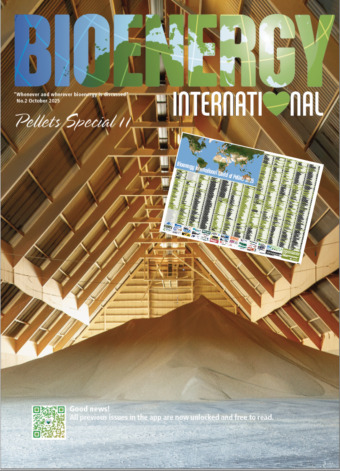800 tonnes of sawdust was recently turned into wood pellets in a globally unique test run in Sweden. That was part of a biomass fuel pellet research project InnoPels that is being carried out on a large scale to investigate differences in quality between different raw material compositions.
Wood pellets are an economical and environmentally friendly energy source made from dried and compacted sawdust from Norway spruce (Picea abies) and Scots pine (Pinus sylvestris), the two main commercial softwood species in Sweden.
Therefore, they are seen in Sweden and elsewhere as a valuable and important component in the transition to a fossil-free society.
Different drying temperatures and types of sawdust
In order to optimize the production and storage of wood pellets, a research study is now investigating whether the pellet quality is affected by the origin of the sawdust in the wood – the heartwood or the sapwood.
The overall goal of the two-year project “Increased resource efficiency through innovative new raw material handling in the production of fuel pellets” (InnoPels) is to generate new knowledge and support for:
- Separation of sawdust from small- and large diametre timber. Sawdust from small diamtre timber contains a high proportion of sapwood while sawdust from large diametre timber contains a high proportion of heartwood, which have different properties for pellet production.
- Evaluate low- and high-temperature drying technologies in combination with the impact of the different sawdust fractions on pellet quality and storage properties.
- Develop rapid spectroscopic methods to assess the quality of the raw material for pelleting and for process control.
Self-heating, which can lead to the formation of flammable and toxic gases, is another issue when storing pellets, and the researchers aim to reduce this potential fire hazard.
Globally unique test run
In order to examine the improvement opportunities in the context of fuel pellets, some 800 tonnes of fresh pine sawdust from small- and large diametre timber was transported to the pellet plant of the municipal energy company Härjeåns Energi AB in Sveg.
This is huge. Such large-scale research trials aren’t carried out anywhere else in the world. Normally, you’d go to a lab and do smaller runs, commented Magnus Persson, who is an innovation advisor and project manager at Paper Province, a leading forest bioeconomy business cluster based in Karlstad.
What makes this volume possible is the collaboration between academia, research, and industry.
If this turns out well, it’s going to have an impact on the entire industry: everyone will be able to learn and benefit from it, Magnus Persson said.
Previous tests
The test run was the second of two major ones. The first one, completed last autumn, involved low-temperature drying. This time, however, a high-temperature dryer was used.
The test run came out well, and now we’ll continue the measurements and analyses in order to determine the outcome, said Michael Finell of the Swedish University of Agricultural Sciences (SLU).
Michael Finell is the project manager for InnoPels, the project where the research is conducted.
With a project budget of SEK 7.3 million (≈ EUR 627 000), InnoPels is funded by the Swedish Innovation Agency (Vinnova), with the participation of Karlstad University, Paper Province, Solör Bioenergi Pellets AB, Härjeåns Energi AB, and Bergkvist Siljan Skog AB.



